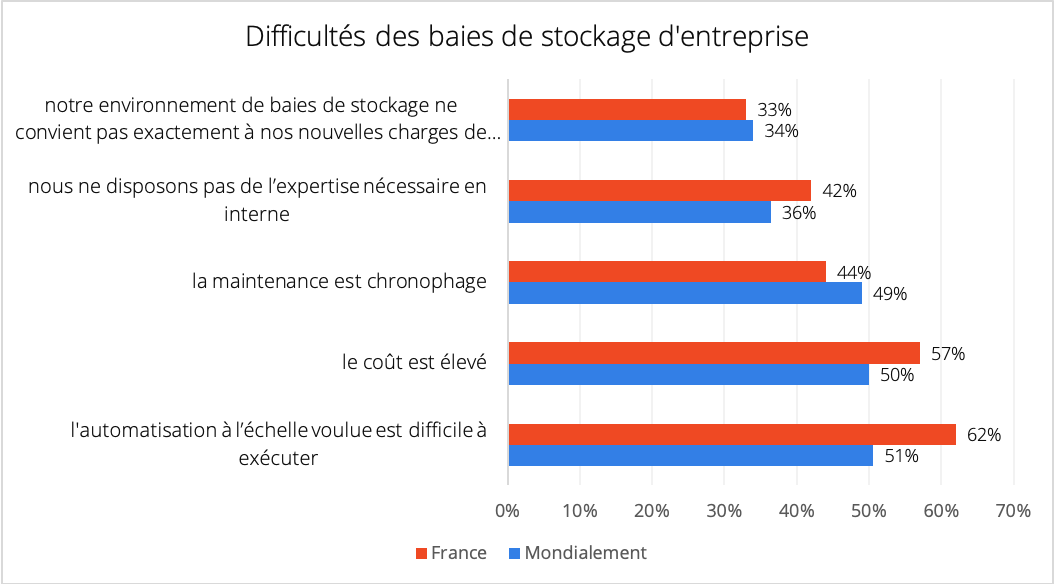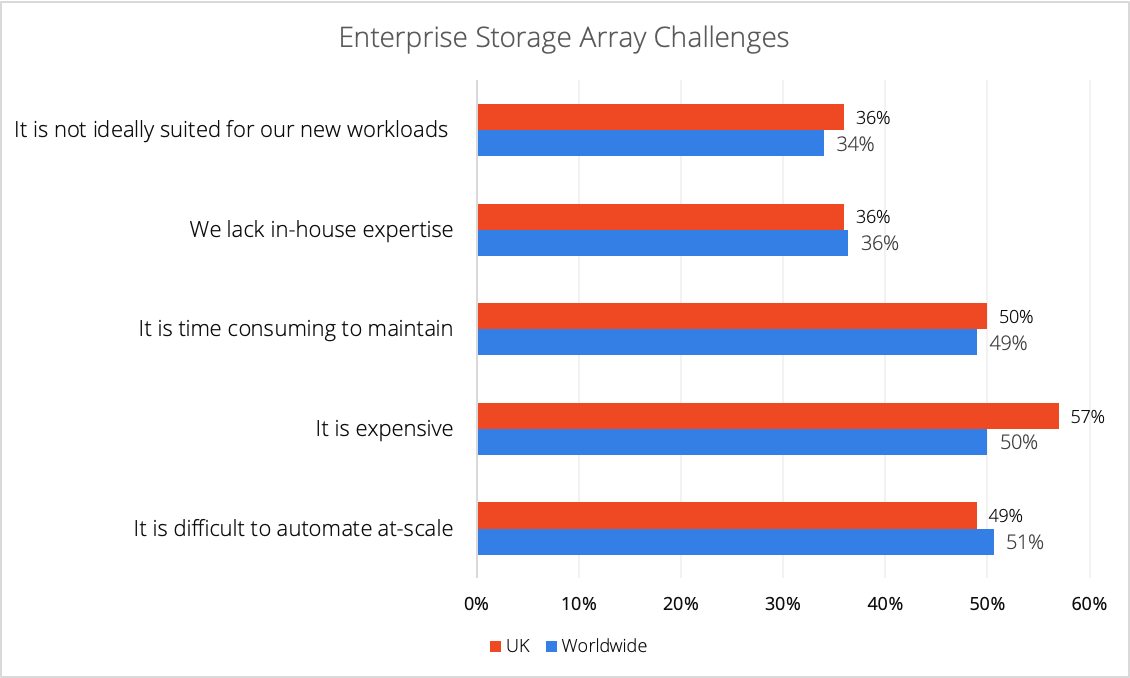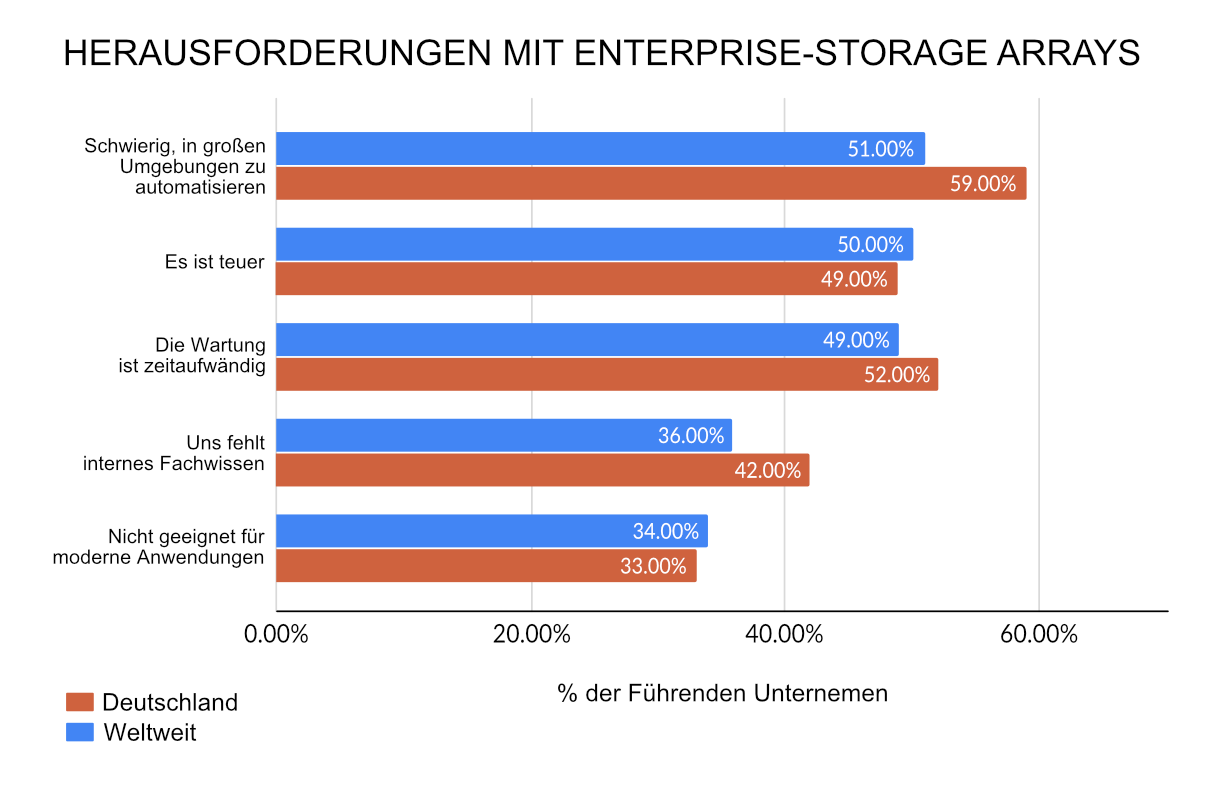Conducted in June of this year, a survey of IT executives exposes the biggest challenges enterprises face in transforming their on-premises application storage environments. The survey also finds that these have been exacerbated during the COVID-19 era.
Nebulon, Inc., specialist in Cloud-Defined Storage, has released the results of this independent survey of IT decision-makers at 500 companies in the IT, financial services, manufacturing, retail, distribution and transport industries across the UK, US, Germany and France.
While IT organisations cite multiple restrictions, the survey reveals limited infrastructure automation and high CAPEX as the most significant challenges for those deploying enterprise storage array technology, forcing them to re-examine IT spending and operations even more so than usual amidst the pandemic.

While increasing automation and reducing costs may seem like mainstream initiatives for any large organisation, the pandemic and resulting workforce restrictions mandate significant progress in days or weeks, versus months or quarters. The results of the survey, undertaken by Vanson Bourne, further reinforce this as respondents also highlighted their on-premises application storage environments are difficult to maintain, and reveal that they lacked the in-house expertise necessary to manage them.
Even more disconcerting, respondents indicate that their traditional external storage arrays are not suited to handle new workloads, including containers and NoSQL databases. This is unsurprising as modern workloads have been architected for local versus shared storage resources.
The highest ranked challenge was “It is difficult to automate at scale”, with an average of 51% of respondents from the UK, US, Germany and France naming this.
Respondents from larger companies (3,000+ employees) were most likely to consider cost to be a top challenge (61% compared to 35% from smaller organisations). The latter (with 1,000-2,999 employees) were more likely to mark “lack of in-house expertise” highly compared to larger organisations (59% compared to 31%).

“The impact of the pandemic is forcing CIOs worldwide to reconsider their operations,” said Siamak Nazari, co-founder and CEO of Nebulon, Inc. “Reducing costs through server-based storage alternatives without the restrictions of hyperconverged infrastructure, and reducing operating cost pressure through cloud-based management of the application storage infrastructure are crucial initiatives for IT organisations looking to survive this new normal.”
For companies with a growing class of mission-critical data that cannot or should not move to the public cloud, Cloud-Defined Storage is an alternative to expensive storage arrays, offering enterprises a cloud-managed, server-based approach for mission-critical storage. By combining a cloud-based control plane, called Nebulon ON, with server-based storage that is powered by the Nebulon Services Processing Unit (SPU), Nebulon enables organisations to reduce cost for enterprise storage by up to half without compromising on enterprise data services.
This is made possible by Nebulon’s unique architecture that makes use of commodity SSDs in industry standard servers, Ethernet in favour of Fibre Channel, and by eliminating operational complexities by moving management to Nebulon ON with an as-a-service model.

Nebulon ON uses artificial intelligence (AI) to analyse application workloads during operations, provides actionable recommendations for IT organisations and provides a single API endpoint that greatly streamlines automation at-scale. Customisable application templates, tailored for customer’s application clusters, eliminate the guesswork in configuring infrastructure and produce repeatable, reliable infrastructure services for modern, mission-critical workloads.
With the architectural and operational simplicity of Cloud-Defined Storage, application owners gain a self-service infrastructure provisioning that is unmatched with existing on-premises storage solutions.
“IT organisations have been seeking a cost-effective alternative to external storage arrays for years,” adds Nazari. “With our Cloud-Defined Storage offering, they finally have the opportunity to reduce costs while also deploying a self-service solution for application owners that also reduces the operational burden.”
Comment on this article below or via Twitter: @IoTNow_OR @jcIoTnow










